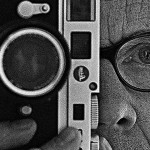Use This ’90s Tech Strategy To Handle Life’s Biggest Challenges
There was no way around the rhino. As Chris Philipps stood with his tribe, staring at the rhino’s horn, he realized he would have to meet it—or die.
That was a dream, but the metaphor of facing down such an adversary caused Philipps to make a final decision. After six years of turmoil, he would stop living as Christiane, a woman, and start living as Chris, an out transgender person.
Like most people facing a huge, complicated life choice, Philipps felt overwhelmed and paralyzed by fear. Should he change his name? Take hormones? What if he didn’t like—or want—all of those changes?
That’s when he turned to an unlikely source: a software development method from the dotcom era.
Known as Agile, it’s a method used by developers at companies like Microsoft and Spotify to design, create, and test new products. It’s something Phillips uses daily at his job in Germany, where he works as a tech adviser for startups and venture capital firms. Now, he would be using Agile to find ways to express his true gender identity—a tall order from a system that’s normally used to create products like Spotify radio. Yet Philipps, and others in tech, are bringing Agile into their personal lives to get clarity on how to navigate life’s murkier passages, such as planning a wedding, engaging your kids, or just learning to be happy.
Work Toward A Vision
Consider a goal, like a New Year’s resolution to lose weight. Most people will choose an exact—and usually large—number (like 50 pounds in six months) in order to motivate themselves.
Although that goal may feel motivational—I’m going to lose 50 pounds!—it’s a hard task to manage when life gets in the way. A cold stops you from going to the gym. A friend buys you chocolates. Your dog is more interested in chasing squirrels than being your running partner.
“Shit will happen,” says Agile guru and trainer Joseph Pelrine, adding, “Pardon my French.” By that point, losing 50 pounds no longer feels like a motivational goal. It’s a huge task that can’t possibly be met, no matter how hard you double down.
In the workplace, this too frequently happened before Agile-like methods emerged in the late ’90s. At the time, developers often used the waterfall method that focused on fixed targets, fixed dates, and fixed amounts of money. For that and other reasons, the Standish Group, an independent research firm focusing on software, gave waterfall a 29% failure rate in its 2015 report.
What Agile planners do differently is to look at the bigger goal behind that target—in the case of losing 50 pounds, the goal might be to feel healthier or look slimmer—and focus their energies on achieving that instead, explains Philipps.
“You create this vision, this 100%, and then you take one step back and say, ‘Okay, what is good enough?’” says Philipps.
So if you can’t lose 50 pounds, but you can lose 20 or 30 pounds, maybe that’s all you need to feel healthier. It’s a way to achieve your goal without beating yourself up if you don’t accomplish every little thing you set out to do.
For Philipps, who identifies as gender fluid, that meant working toward a state of being where he could feel more himself, rather than striving for some strict binary version of masculinity. “I want to have a more male body, but I don’t necessarily need to pass as a male in society in order to be happy,” says Philipps.
Create A “Backlog” Of The Smallest Steps
Of course, that still leaves a gap between where you are and where you want to be, and the path from Point A to Point B can be long and confusing and terrifying.
“When there is a huge, daunting goal, often our little monkey brains freak out and nothing gets done,” writes productivity and happiness coach Dinah Sanders. “The mountain just seems too high to climb.”
In situations that seem irreversible, the fear of doing or not doing can lead to total paralysis. When it comes to scenarios like transitioning, the stakes are high. “Maybe people say, ‘Okay, either I have to do it or I kill myself,’” says Philipps. “I wouldn’t go that far, but I can totally understand it.”
By breaking the bigger goal down into its smallest, most manageable parts, the journey becomes far less overwhelming. In Philipps’ case, that meant taking small, gradual steps that made him feel more in control, like dressing in a more masculine fashion, trying out a male name, or taking a low hormone dosage.
It’s a process that also works well to transitions that seem more clear cut but stressful nonetheless.
In 2013, Agile trainer Martin LaPointe faced the task of moving his family back home to Canada after a two-year stay in Paris. “We were just overwhelmed with the number of activities that we still had to do,” says LaPointe, whose children were 5 and 8 years old at the time.
In an effort to involve his kids (and keep his sanity), he borrowed some inspiration from work, creating what Agile programmers call a “backlog,” or list of every single activity that needs to get done. Like most developers, LaPointe wrote small, specific tasks on Post-It notes and arranged them into three columns: “To Do,” “Ongoing,” and “Completed.” “It was really the first time I was doing it with the kids,” says LaPointe. “They were so excited. I think we stayed up until midnight writing Post-Its and filling up the wall.”
Hold Yourself Accountable
Writing notes is a physical process that goes hand-in-hand with another Agile rule to hold yourself accountable.
Creating a sense of visual progression works best for projects that involve large groups. “The week we introduced a morning checklist into our house, it cut parental screaming in half,” said New York Times family columnist Bruce Feiler in his 2013 TEDSalon talk: “Agile Programming—For Your Family.”
Similarly, LaPointe noticed his children were eager to move their Post-It notes toward the “Completed” column every morning. “We had never seen so much work get done so fast.”
Their morning check-ins had another effect. Regularly sharing their accomplishments and thoughts with others gave LaPointe’s children more confidence. “It gave the kids some abilities or tools to manage their anxiety, or just to understand that it’s safe to get in front of people and just talk about things,” says LaPointe, whose younger daughter became more comfortable giving presentations at school.
Check-ins also work well for smaller groups. When Pelrine, the Agile trainer, and his fiancé decided to get married, they talked about their wedding plans every Saturday over breakfast, discussing what got done, what still needed doing, and who would be the best person to handle each task. It was a quick meeting that helped them organize their wedding in an incredibly short amount of time. “We pulled it off in six weeks,” says Pelrine, despite their full-time schedules.
“None Of This Repeated Process Of Doing, Checking In, And Adjusting Needs To Be Complicated.”
“None of this repeated process of doing, checking in, and adjusting needs to be complicated,” says productivity coach Sanders, who used Agile to write her book, Discardia: More Life, Less Stuff, which discusses how to lose objects or habits that don’t “make your life awesome.”
“Even something as simple as 15 minutes of journal writing every morning can serve as my reality check that I am still heading in the right direction,” says Sanders.
Be Flexible
One of the key tenements of Agile is flexibility. That’s because nothing matters if the goal, or the path toward that goal, is making you miserable. It’s why most developer meetings will include questions like, ‘What worked this week? What didn’t work?’ and let those answers change the goal where needed.
“No matter how excited I got at the beginning, and how big a plan I drew up,” says Sanders, “I always maintained the option of changing the plan, or even abandoning a project, if it’s no longer taking me where I want to be.”
It’s the difference between what some people might call “giving up” and others call purposely refocusing. Although they may look like the same thing, there is a subtle difference that lets your mind move forward, rather than dwell on what went wrong.
“People don’t understand that they can train consciousness like a muscle,” says Philipps who still finds a number of people at Agile workshops and conferences fascinated by its application outside the workplace.
“Many people think taking care of your mental health or your emotional health is someone else’s job, or it is no job at all,” says Philipps. He believes it’s our primary task to take care of ourselves, our mental health, our emotional stability, and our well-being. “I use any tool that is useful, and I can get,” Philipps maintains, “in order to make that happen.”
related video: How Design Thinking Can Help You Solve Life’s Wicked Problems
Fast Company , Read Full Story
(20)














